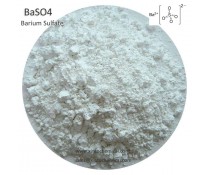Road Marking Paint
Thermoplastic road marking paint, also called hot melt marking paint, is a kind of powder paint. When applied as road surface markings, a hot melt kettle is used to heat it to 200 °C (392 °F), after which it is sprayed on the road surface. The coating then becomes a line after cooling. This paint is thick coating, wear-resisting, bright and reflective. In recent years, practical applications have proved that the marking lines lack certain surface roughness and can easily cause wheel slip, resulting in a traffic accident in snow and rainy weather. Therefore, some countries once restricted the use of this paint. In order to increase the antiskid performance of the line, thermoplastic paint has added reflective glass beads. Thermoplastic can be used very effectively for large Anti-skid areas on roads and pedestrian walkways by adding glass beads. It can be produced in any colour and is great for car parks , factory walkways and many other areas. It's fast drying and can be driven over after just a few minutes.
Thermoplastic marking paint is mainly composed by synthetic resin, glass beads, pigments, packing materials, additives, etc.
1. Synthetic resin has thermoplasticity, make the hot melt coating fast dry and strong adhesive to the road surface.
2. Additives in the paint can increase the plastic of the coating, and make it resistant to subsidence, pollution and color fading.
3. Pigments: the common colors of road lines are yellow and white. White pigments are mainly titanium dioxide, zinc oxide, and lithopone, while yellow pigment is mainly heat-resistant yellow lead.
4. Packing materials, as filling added into the paint, ensure mechanical strength, wear resistance, and color of paint coating. The particle size will affect liquidity and precipitation, as well as the surface processing.
5. Glass beads are added in order to improve the identification of lines at night, to improve the brightness and durability of the marking. Glass bead is colorless and transparent ball, has function of light refraction, focusing and directional reflection. Glass bead mixed in the coating or dispensed throughout the coating surface can reflect car light back to the driver's eyes, thus greatly improving the marking visibility.



